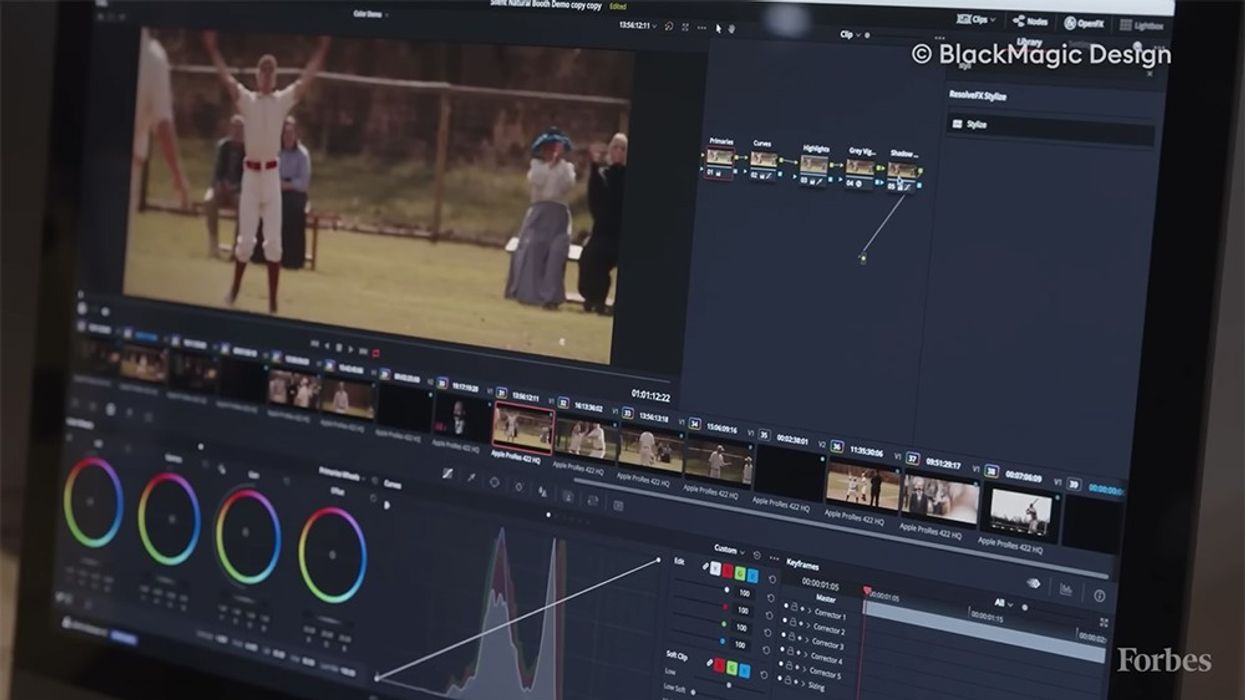How the Philosophy of Blackmagic Design Changed Cinema Cameras Forever
Cinema cameras were once the cream of the crop. Now you can get one for under $2,000. Here’s everything you did (or didn’t) know about BMD.

I still remember the first time I saw the OG Blackmagic Cinema Camera (the BMCC for short). It was a tight, silver, square box that looked more like a lunch pail than any of the ergonomic DSLR camera designs I was used to. However, I also remember the first time I edited any footage shot with it, and that eureka moment where I saw just what that extra dynamic range meant for the colors in my video.
For those who aren’t old enough, or just simply haven’t been in film and video long enough (or heck, even for those who have plumb forgotten), let’s take a look back through the history of Blackmagic Design in this cool featurette from Forbes.
Starting from Video Capture Cards for Video Editing
Starting in 2001, CEO Grant Petty founded Blackmagic Design in his hometown in Australia. He sits down with Forbes magazine for this featurette, and we get a pretty cool behind-the-scenes glimpse of BMD’s history and the philosophy at its core.
BMD’s first product was a video capture card for macOS called the DeckLink, which was used to offer uncompressed 10-bit video for early video editors and colorists. As demand for their original product grew, Petty and BMD ventured into other areas adjacent to these color and video editing needs.
Speaking personally, it’s cool to see Petty talking about BMD’s origins so candidly. Even as it has grown and developed into a holistic video tech and gear company, the brand really does stay true to its roots and core principles, which Petty based on his earliest days of working in a small television studio. It was all about meeting the demand of creatives and not just creating a product to sell.

Making Color Technology Affordable
Over the years, Petty and Blackmagic would move on from just video capture cards and into video editing software. In 2009 BMD acquired DaVinci Resolve (known then as Da Vinci Systems), their first color grading and NLE application.
At the core of this decision to expand, Petty also unveiled one of BMD’s biggest brand philosophy decisions when they announced that DaVinci Resolve would be free. This mantra of “making creators free” really lives on as Resolve is still free and easy to use today—in contrast to its NLE competitors like Premiere Pro and Final Cut. Petty is pretty candid about his distaste for the subscription model and believes in the idea of empowering creatives, which in turn will have them return to BMD to purchase more products. So far, this business model has paid off.
That being said, Blackmagic also offers a slightly more capable studio version for $295, including expanded resolution capabilities, additional OFX plugins, and DaVinci’s Noise Reduction Engine. But even at that price point, it compares well to its competition. (And something video editing consumers should be happy about as, at the very least, it keeps prices low and innovation high in the industry.)

Digital Cinema Cameras and the Future
Eventually, Petty and BMD made the bold decision to move into camera design and creation—however, perhaps not for the reasons you might think. According to Petty in this sit-down, one of the biggest motivators for the push into camera manufacturing simply came from the frustration that there weren’t enough quality (and affordable) cameras out there that could use their great color grading products.
To remedy this issue, BMD announced its first Blackmagic Cinema Camera at NAB in 2012. Since then, BMD has become one of the biggest names in the digital cinema camera game as it has revolutionized the industry with the aforementioned BMCC, the URSA Mini, and, of course, the Pocket Cinema Camera 4K (and 6K, 6K Pro, and now 6K Pro G2).

The biggest takeaway from this featurette interview with BMD’s founder is that the brand certainly does not appear to be slowing down. And, truth be told, the film and video industry is continuing to grow at a rapid pace. This means brands like BMD and others will only continue to push for new technologies, products, and workflow solutions. So, regardless of whether or not you’re a BMD user, you should feel good that there are forces at work making your filmmaking life easier and better every day.
How do you feel about products like DaVinci Resolve and the Pocket 4K? Let us know your favorite (or least favorite) BMD innovations in the comments below!
Source: Forbes











